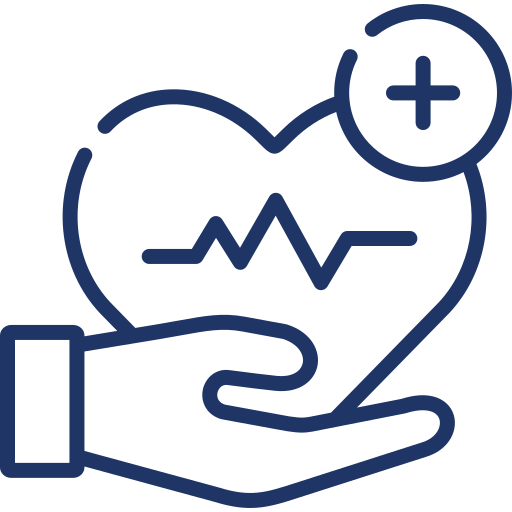When you have difficulty swallowing, the first thing that comes to mind is a sore throat. But there are two causes of throat pain: One caused by a viral infection and one caused by bacteria. In this article, we’ll talk about ordinary sore throat and strep throat, what causes them, how they are tested, how to treat strep throat and the typical sore throat, and if antibiotic treatment is necessary.
How common is a sore throat?
A sore throat is an infection that makes it painful and difficult to swallow. The throat often feels very dry and itchy; some people may even find it difficult to speak. It can happen to anyone, regardless of age. However, it’s rare among young children two years old and below.
Sore throat is often a symptom of the common cold, flu, allergies, and other things that involve the upper respiratory tract. Gastroesophageal reflux disease (GERD) can cause it when acid reflux reaches the throat and voice box. Many things can cause a sore throat, so it’s important to identify the real cause to determine the proper treatment.
Ordinary sore throat or strep?
Sore throat pain (pharyngitis) is a common health issue. It’s usually the result of a viral or bacterial infection. Viruses can cause a sore throat and other upper respiratory infections, such as the common cold.
Viral sore throats are not treated with antibiotics. Instead, they are treated with rest, pain medication, and other therapies aimed mainly at relieving symptoms.
What causes strep throat?
Strep throat is a particular kind of pharyngitis caused by a bacterium known as Group A Streptococcus (GAS). The same bacteria that causes strep also causes Scarlet Fever, which is why some people with strep may also experience bright red bumpy rashes all over their body. If sore throat is due to strep, it requires immediate care and should be treated with a course of antibiotics.
Viral Pharyngitis
Most people with sore throats have a virus. Symptoms of a viral infection can include:
- A runny or congested nose
- Irritation or redness of the eyes
- Cough, hoarseness, or soreness in the roof of the mouth
- Fever
The influenza virus is a common cause of sore throat. Proper medication is necessary if your symptoms start within 48 to 72 hours.
Strep Pharyngitis
Strep throat is not as common as viral pharyngitis, but it’s common in children 5 to 15 years old. Approximately 10% of adults with a sore throat have strep throat, while about 30% of children with sore throat have a strep infection. Strep throat symptoms in adults and children often include:
- Pain in the throat
- Fever (temperature greater than 100.4ºF)
- Enlarged lymph glands in the neck
- White patches of pus on the side or back of the throat
- No cough, runny nose, or itchy red eyes
Symptoms of strep throat can get more serious. If you experience the following symptoms, you must seek medical care immediately:
- Difficulty breathing
- Skin rash
- Drooling because you cannot swallow
- Swelling of the neck or tongue
- Stiff neck or difficulty opening the mouth
- Underlying chronic illness or medication that may impair your immune system
Strep is highly contagious and can easily spread from person to person. The bacteria live in the nose and throat and can spread through coughing, sneezing, shared food or drinks, and surfaces they touch, such as doorknobs and handrails.
Testing and diagnosis
Looking at a patient’s throat is not enough to get a proper diagnosis. The doctor will have to run tests to diagnose strep throat or viral pharyngitis more effectively.
Rapid strep test
A rapid strep test helps determine if there’s a presence of strep-causing bacteria in the throat. The doctor will swab the back of the mouth, throat, and tonsils to collect the needed sample for testing. The results will be ready within just 10 to 15 minutes after swabbing.
Throat culture
There’s a 5% chance that the test may show negative results. Doctors may run a throat culture if they are quite doubtful about what’s causing a patient’s sore throat pain.
A throat culture is a test that also involves swabbing the tonsils and the back of the mouth. This, however, may need more time to generate reliable results. The sample will be sent to the laboratory for further testing. Results will be available after about a day or two.
When to take antibiotics
If your strep test is positive, the doctor will prescribe antibiotics to treat it. Penicillin or amoxicillin is the go-to treatment for strep. You must finish the course of the treatment, even if you think your condition has improved. If not, the infection may come back or develop into rheumatic fever.
On the other hand, if your strep test is negative, you may have a sore throat caused by a virus. According to the CDC, this type won’t require antibiotics and will usually go away independently. Antibiotics may only make the situation worse. They may cause side effects, such as antibiotic-resistant infections and other life-threatening conditions.
Throat pain relief
While waiting for your throat to heal, there are things you can do to ease any pain or discomfort.
- Gargle with a water and salt solution. Simply stir half a teaspoon of salt into a cup of warm water. This can help relieve inflamed throat tissue.
- Throat lozenges or hard candy can help relieve pain.
- Throat sprays can help numb sore throat pain.
- Keep the throat warm with a warm compress. You can use a small towel soaked in hot water, a heating pad, or a hot water bottle. The warmth can help soothe swollen lymph nodes.
- Stay hydrated and drink warm water. Avoid sweet, citrusy, and alcoholic beverages at this time. as these may irritate the throat even more.
Sore throat prevention
Sore throat, regardless of its cause, can be prevented. First, you must stay away from infected people. You won’t know what type of infection they have, so you might as well avoid physical contact until they are better.
Wash your hands as often as possible. If you’re unable to wash immediately, use an alcohol-based sanitizer. If it’s also unavailable, avoid touching your face, rubbing your eyes, or putting your hands or fingers in your mouth.
If you are infected, you can do things to avoid spreading the infection to others. To keep your family or housemates safe, separate your food and utensils. Also, cover your nose and mouth when you sneeze or cough.





